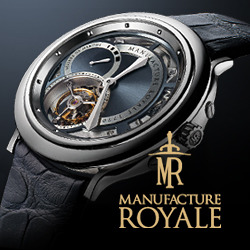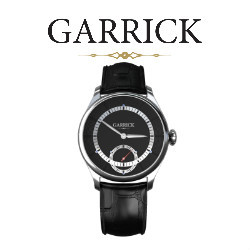Do the Swiss “party”? Not in the way that, say, Americans exercise the concept, but they do know how to mark the years. Because Longines is finally getting the push it has long deserved – re-launched, in a manner of speaking – the company has marked the auspicious occasion of its 175th anniversary with a plethora of commemorative events and launches. Not least are additions to their glorious museum. Then there are two astonishing books. Oh, and three sublime watches not seen at the Basel watch event earlier this year.
Anniversaries are the marketing man’s godsend. If the companies are not too silly about it – why mark the 11th? The 28th? – they can be used to great effect. And reaching the 175th? In watch terms, that makes you one of the oldest and longest-serving … especially if it’s an unbroken production run rather than a gap of 200-plus years of wishful thinking.
Longines need bow to no-one. Indeed, it’s tough to think of any other brand with as many awards, patents, or other indicators of genuine achievement. And with its parent company, the Swatch Group, finally realizing (if not admitting outright) that it’s the most accomplished brand in their entire stable, well, it’s time to celebrate.
And what are they able to boast about? Check out this litany of achievements: Longines was one of the premier designers of chronographs during the pocket watch era, its first wristwatch dates back to 1905, and the company released its first in-house automatic in 1940. It won 10 watch Grands Prix by 1929. Longines developed both the Weems and Lindbergh watches for pilots, able to synchronise the timekeeping with radio signals to achieve navigations with pinpoint accuracy. And they’re still in the catalog.
Collectors know that Longines the 30CH of 1947 just may be the finest manual-wind chronograph movement ever. In sport, its Photogines of 1952 was the first device to measure times optically at the finish line. Longines was an associate of Ferrari’s F1 team, it timed the Olympics, and was an early developer of quartz movements including the Longines Ultra-Quartz, in 1969. Oh, there’s plenty to talk about, read about, even dream about. And Longines wants you to know it.
Unveiled this year were two new rooms for the company’s museum at Saint-Imier. Of particular interest to the new breed of watch collector is a sublime display of Longines’ output over the half-century of 1957-2007, especially revealing for the variety of fascinating pieces released even during the industry’s “dark years”: between the birth of quartz and the mechanical movement revival of the 1990s.
Hundreds of models are on display, including now highly-collectible items like the Longines Flagship (1957) and the L990 (1977) – the last automatic calibre manufactured in-house. Chronographs, dress watches, sport watches, diving, dress – ever watch “genre” is represented. In an adjacent exhibition room, around 800 books reveal all the secrets of “the 15 million watches produced by Longines before the IT revolution.” (Production has now passed 34 million.) Watch historians and researchers can exploit a well-stocked library which includes books of invoices from the 19th century. As Longines observes, “The fortunate owner of a pocket watch from 1867 will be able to trace the name of the watchmaker who checked the rate of his timepiece at that time.”
Even broader in appeal, especially for students of graphics, marketing, and advertising, is the display recounting the development in advertising by Longines, which both charts general changes in design and taste as well as the evolution of the brand. These cover the period from the end of the 19th century to the present, around 50 panels tracing the history of Longines advertising. Some are such gorgeous examples of art nouveau and art deco that you’d want these posters to adorn your walls even if watches aren’t your passion.
All of this material has led to the publishing of two phenomenal books, one unashamedly aimed at the scholar rather than the casual collector and one of interest to a wider audience. The latter, A Region in Time, written by the sociologist and historian Laurence Marti, analyses the history of watch-making in St. Imier, but it’s no dry textbook. Despite a daunting subtitle that reads “The socio-economic history of the Swiss valley of St. Imier and the surrounding area, 1700-2007,” it is a lavish and luxurious coffee-table book with the footprint of an LP sleeve, copiously illustrated and bursting with both hard facts and a truly human component.
To trace the economic and social history of the region, Marti investigated every aspect, and it’s doubtful that there’s ever been a more comprehensive look at the history of watchmaking. If there’s anything to which it can be likened, it would have to be one of those amazing TV histories by Ken Burns. While portraying the importance of watchmaking for the region, it manages to remind readers without clubbing them over the head that Longines is the only company still in operation which spent its entire lifespan in Saint-Imier. And that is a generous achievement, Marti also citing every brand in the region even if they were direct competitors; the company clearly gave Dr. Marti free rein, allowing her to refer to any watch manufacturer that needed mentioning – not just Swatch Group siblings.
It’s unlikely that you’ll curl up with Longines’ second monumental literary achievement this year, so much as refer to when the need strikes. And although the title is wordy in the extreme, Patrick Linder’s At the Heart of an Industrial Vocation – Longines Watch Movements (1832-2007) – Tradition, Know-how, Innovation is the sort of work that will have watchmakers swooning. It is, simply, an absolutely comprehensive study of every single movement Longines has issued.
Each calibre earns at least a two-page spread with an oversized illustration, a lucid prose description recounting the movement’s birth, how it relates to other movements, its applications and more. Full specifications accompany each spread, and collectors, auctioneers, vintage watch dealers and – above all – watchmakers will beg other houses to offer the same. A true catalogue raisonnée, this book provides “a summary of the technical know-how built up and acquired by Longines over the years.” This is a dream of a book – and there were gasps of surprise when the copies first appeared at the October launch. (Not least because the books weighs so much that some journalists were worried about luggage allowances.)
But Longines is about watches, and the three that were announced post-Basel also had the audience reaching for superlatives. For the ladies, the company unveiled the Longines 175 Diamonds to commemorate the milestone with two significant details adhering to the anniversary: 175 0.671-carat Top Wesselton VVS diamonds grace the watch, and only 175 will be made.
Inspired by a piece created in the 1920s, the Longines 175 Diamonds features a rectangular case in 18-carat white gold, with decorative knots around its border. Details include a white mother-of-pearl dial with 11 Arabic numerals marked by diamonds and double minute track. The watch displays hours and minutes, with a small seconds dial at the 6 o’clock position via black stainless steel hands. Drive is through an L176.2 quartz movement, and the watch encircles the wrist with a glossy white leather strap. Delicate it may be, but the Longines 175 Diamonds possesses water-resistance to 30m/100 feet and features a scratch-resistant sapphire crystal.
Two new men’s watches, though, elicited exclamations of disbelief, because they boasted complications unknown at the suggested price point. Both constitute a new range for the company, the Longines Master Collection Retrograde. They come in the form of two distinct versions of a primary model, featuring a new automatic mechanical calibre developed especially for Longines.
Longines worked closely with ETA to deliver not one but two multi-hand retrograde models, with immediate flyback response. One offers four retrograde functions, for day, date, seconds, and a second time zone on a 24-hour scale. The second offers three retrograde functions for day, date, and second time zone on a 24-hour scale, with conventional sweep seconds from the centre. Where the former model uses the retrograde above the 6 for seconds, the latter uses the hand above the 6 for power reserve indication.
With classic styling, automatic winding, stainless steel case with a transparent sapphire crystal case back, a choice of 41mm or 44mm diameter sizes, steel bracelet or an alligator-skin strap in black or dark brown and triple folding clasp, polished indices, silvered dial with “barley-corn” decoration and blued hands, the new retrograde models are fitting flagships for Longines. What none could have expected are retail prices below 5000 euros.
In other words, it looks like Longines gave birthday presents to us.
(iW Magazine, December 2007)










